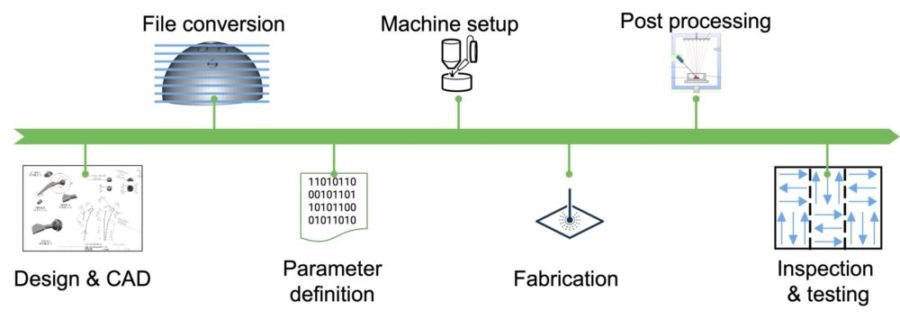Additive Manufacturing Workflow
From virtual file to final part
The process of producing a part works in very different ways depending on the technology and the most important processes will be explained in more detail later in this course.
The overall process chain, covering the steps from a digital file to a finished product, is generally shared by all processes. There will, however, be some variations depending on the process and certain steps will require more effort whereas other steps will be more trivial for some processes.

While a lot of of focus is usually put on the actual fabrication of the part, it often only accounts for a small portion of the overall process. It is thus important to be aware of all the different steps. We will give a quick overview of the different steps here.
Computer Aided Design
Every AM process starts with 3D CAD information of the part to be produced.
Read MoreStep 1File Conversion
Once the CAD file has been finalized, it must be converted - usually into an STL file.
Read MoreStep 2Parameter Definition
Before starting the print job, machine-specific parameters need to be assigned.
Read MoreStep 3
Machine Setup
Once the print file has been sent to the printer, the machine needs to be set up physically.
Read MoreStep 4Post Processing
Post processing refers to the often manual operations that are required after a print to finish a part for its application purpose.
Read MoreStep 6Quality Control & Testing
The final step is the quality control and testing of a part.
Read MoreStep 7Read more about this topic in the AM Fundamentals Course.

